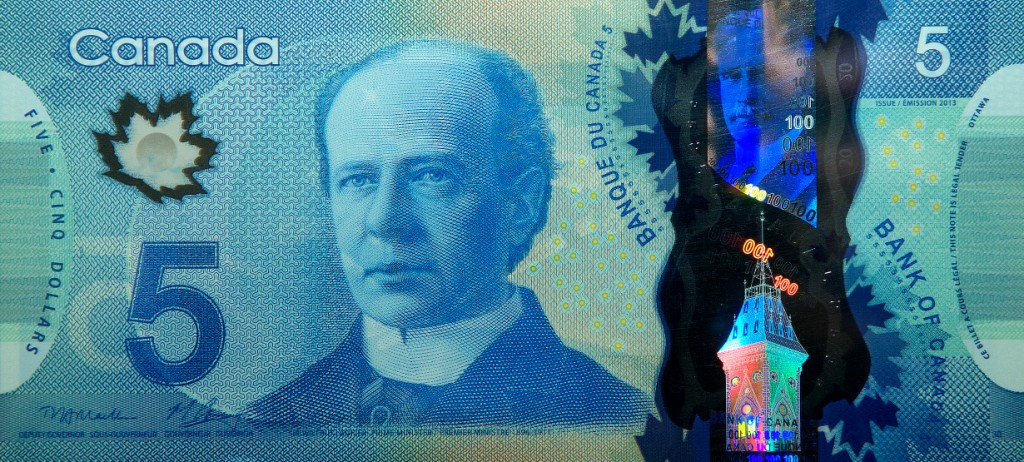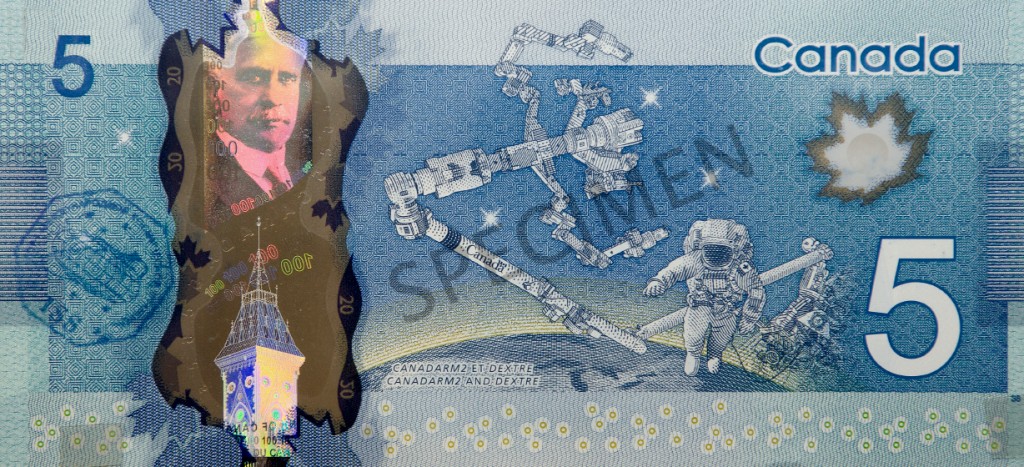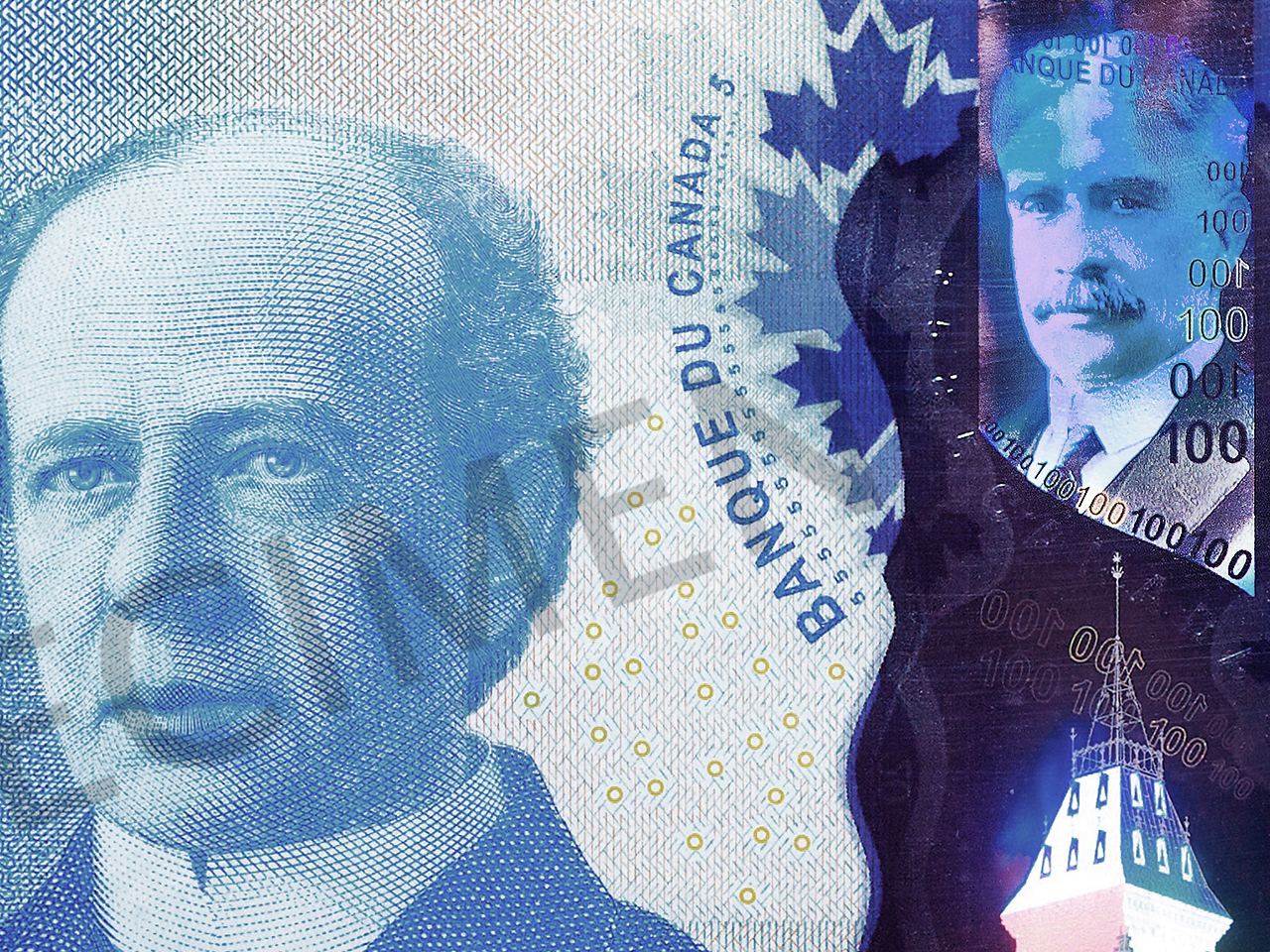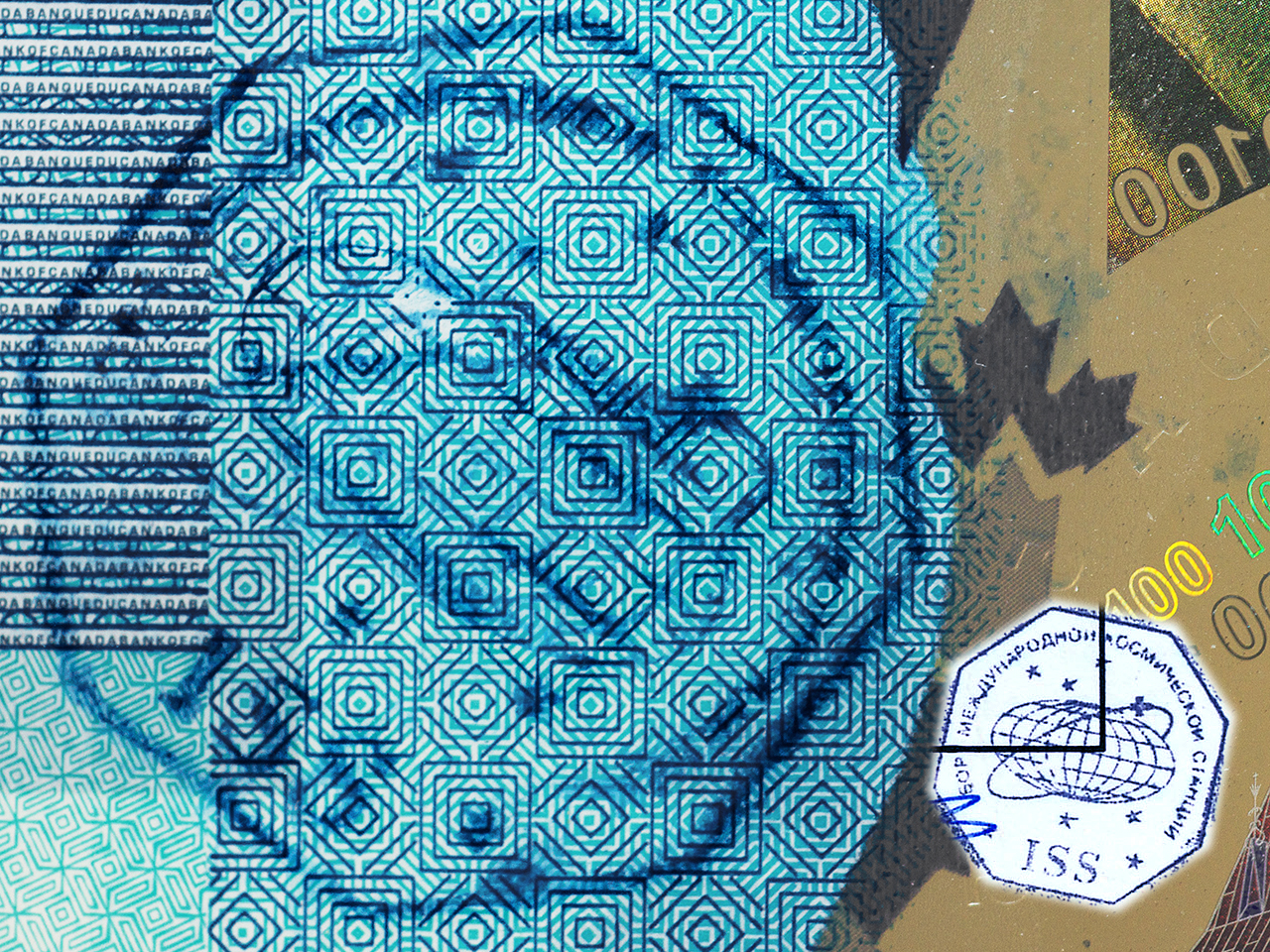The Hadfield 5
By Graham Iddon, Museum Writer
It looks normal enough. What could be so special about this bill? Yes, it has orbited the Earth roughly 2,500 times but that isn’t the only reason why this bank note is unusual.
In December of 2012, Canadian astronaut Chris Hadfield blasted off in a Soyuz rocket to begin a five-month mission on the International Space Station (ISS)—taking over as station commander in March 2013. In his kit was a sample of the new Canadian polymer 5-dollar bill. Why would anybody need money on a space station? To study the effects of zero gravity on the dollar, perhaps? No, because on 30 April 2013, in a simulcast video broadcast with Bank of Canada Governor Mark Carney and Finance Minister Jim Flaherty, Commander Hadfield unveiled the new polymer five-dollar bill live from space. Cool. (see our blog: Nov 2013) The 10-dollar note was also unveiled at the same event by the Chairman of VIA Rail Canada Board, Paul G. Smith—live from Planet Earth. When the Bank put the 5-dollar and 10-dollar into circulation some months later, it was to be the first time multiple notes had been issued on the same day since the 1954 series launch.
Normally, just the exchange rate floats. Stills from the live broadcast from the International Space Station.
It takes years to develop a new note series and when a new note is unveiled it is generally months before it is ready to be placed in circulation. The polymer 5-dollar and 10-dollar notes were issued on 7 November 2013. Since Canada Post doesn’t deliver to space (cutbacks?), Commander Hadfield needed to pack an example of the new five already in his luggage when he took off in December of 2012—which brings me to why this particular 5-dollar bill is special.
Take another look at the images at the top of this post. Click on them and zoom the images to full size. Do you notice anything peculiar about this bank note? It’s blue; it’s denominated as 5-dollar; it has handsome portraits of Sir Wilfred Laurier on it…hold on a minute! The sharp observers among you will notice that there is something awry with the small metallic portrait of Laurier: he has a fine head of hair, a moustache and looks suspiciously like Sir Robert Borden. The reason, of course, is that when Hadfield was scheduled to take off for his mission, a complete proof of the 5-dollar bill wasn’t going to be anywhere near ready. So the Canadian Bank Note Company printed the pre-production elements of the 5-dollar bill onto the polymer substrate of the 20-dollar bill together with the applied holographic foil of the 100-dollar bill. Did you get that? Good. This accounts for the portrait of Borden and all those tiny 100s in the clear polymer window.
An inspection of the back of the note also reveals a blurry octagonal shape on the left. It’s the symbol of the International Space Station stamped on the note in blue ink (by who, we aren’t sure). The ISS has a rubber stamp for identifying documents and souvenirs that have been aboard the station. The ISS’s fifth space tourist (a paying civilian passenger) Charles Simonyi took his passport along with him for his trip, and had it stamped as he would in any country. It’s “space station cred” and a tradition started by the Russians.
The National Currency Collection holds several polymer five-dollar bills. The first and the fifth official bills of any new design series (numbers 00 and 04) go into the collection. The three sets of notes in between go to the Governor, the Prime Minister and the Finance Minister. On 23 September of last year, the ISS 5-dollar mock-up was formally transferred into the National Currency Collection. It has not been officially accessioned yet (assigned a number and entered into our database) and currently it is in a frame hanging in the Bank of Canada executive board room.
The circulating 5-dollar bill: compare its details to the images at the top of this blog. The ISS 5-dollar bill as it hangs in the Bank of Canada executive board room.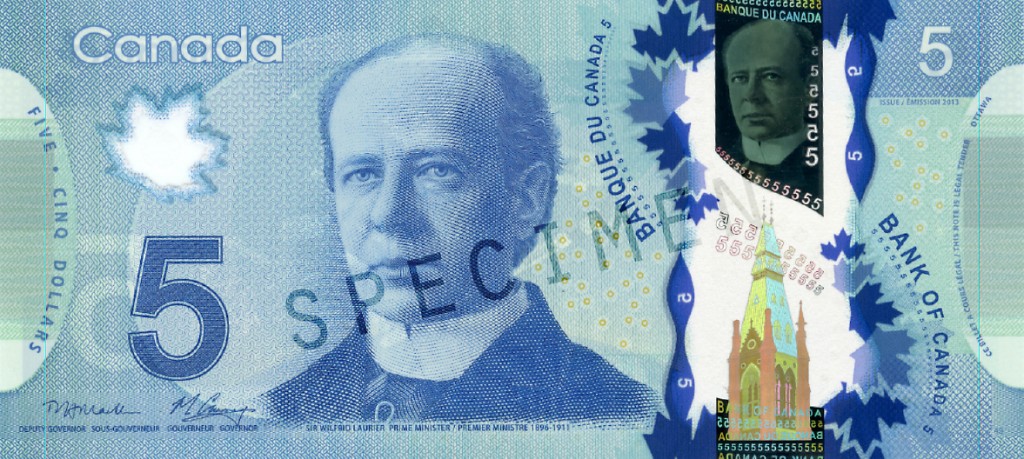
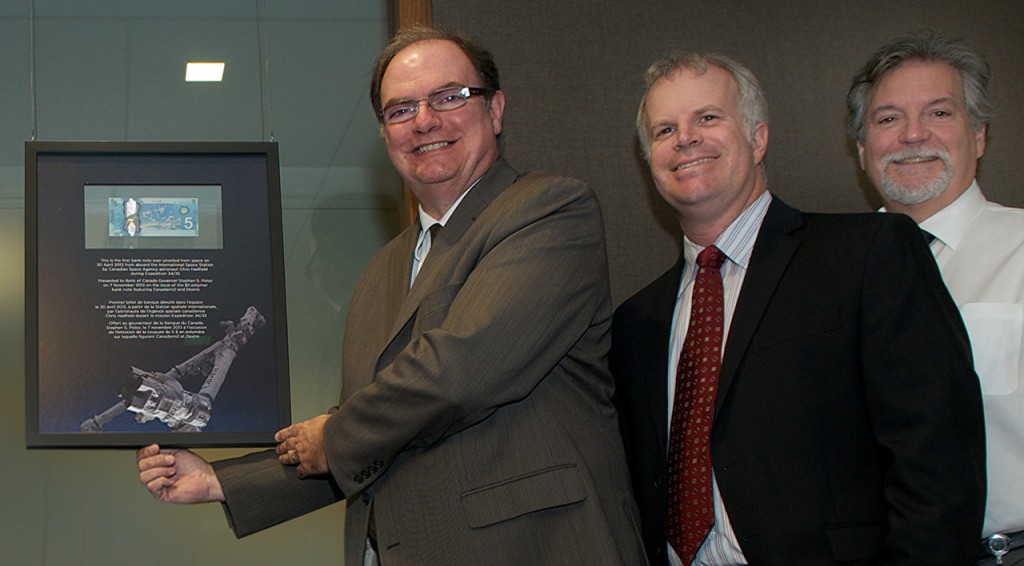
The Museum Blog
Whatever happened to the penny? A history of our one-cent coin.
By: Graham Iddon
Good as gold? A simple explanation of the gold standard
By: Graham Iddon
Speculating on the piggy bank
By: Graham Iddon
New acquisitions—2024 edition
Money’s metaphors
Treaties, money and art
Rai: big money
By: Graham Iddon
Lessons from the Great Depression
By: Graham Iddon
